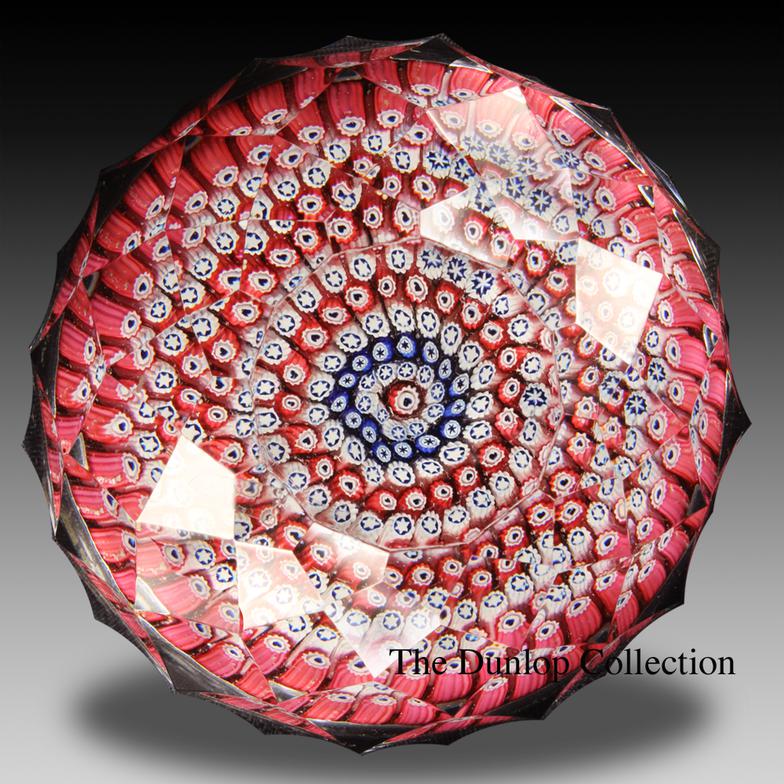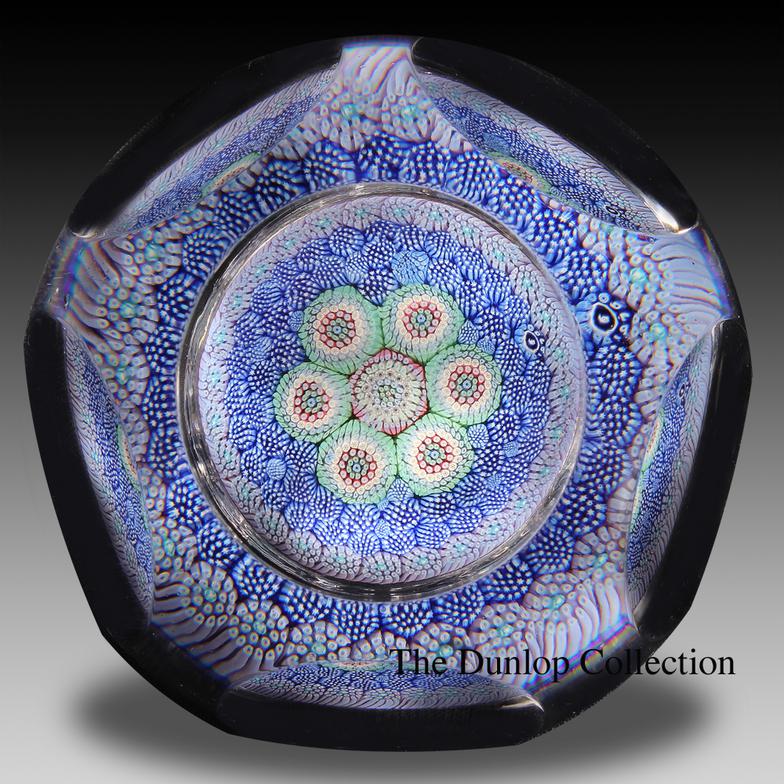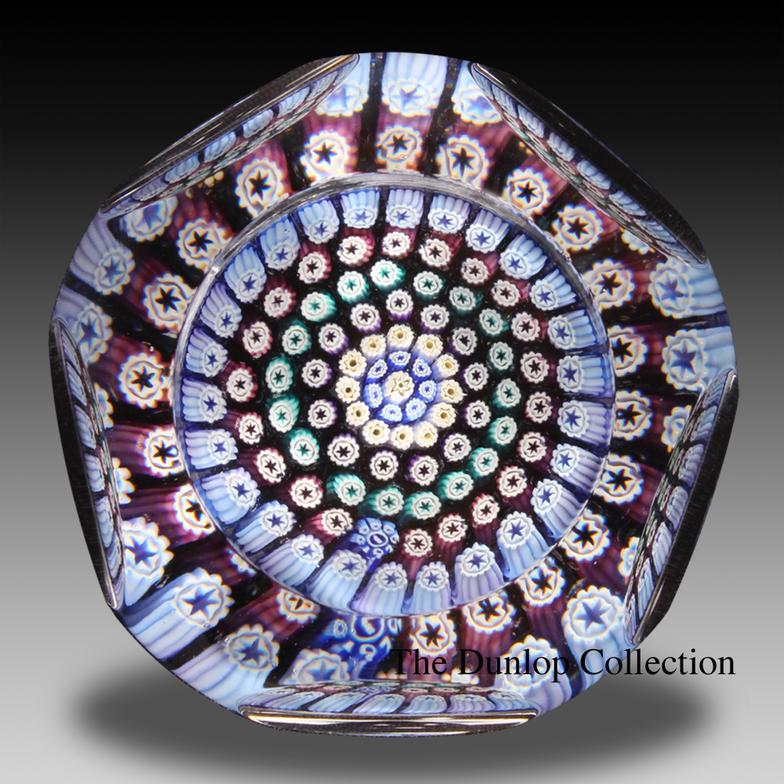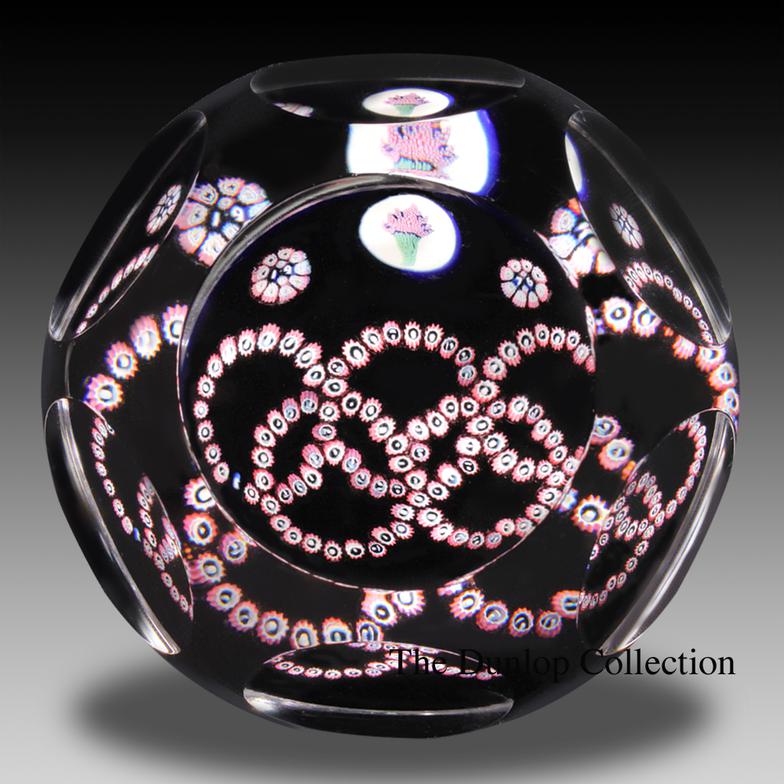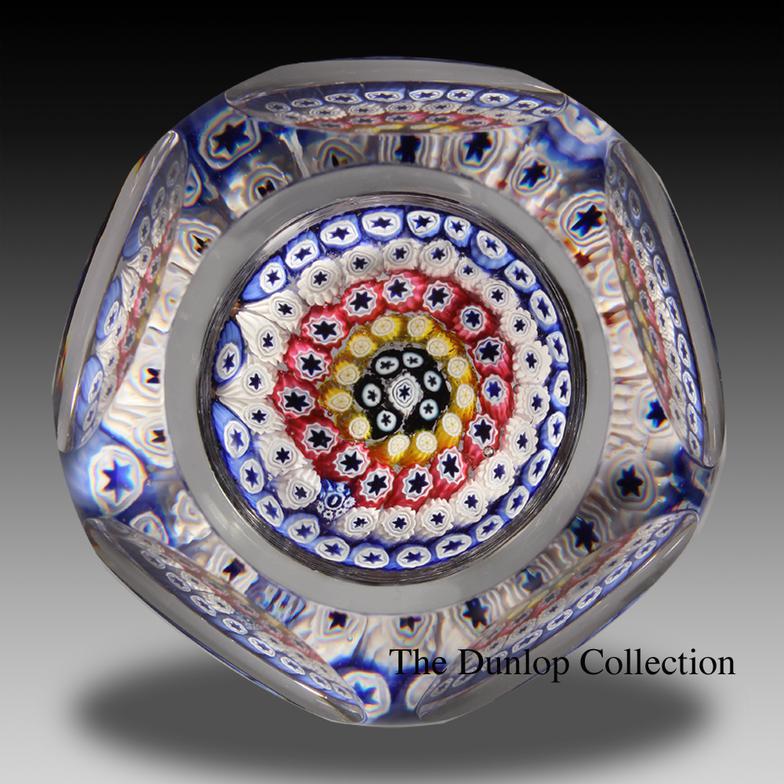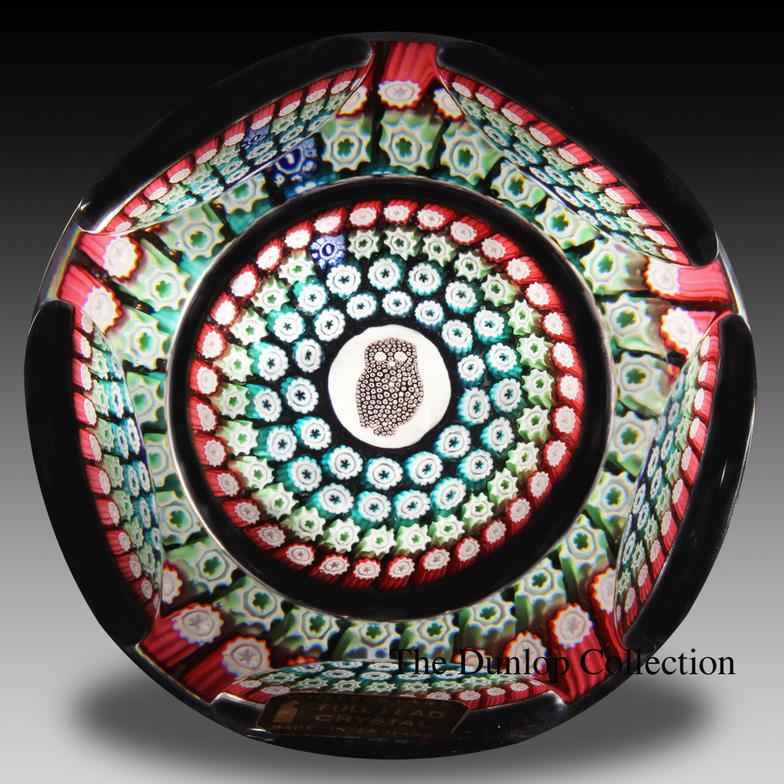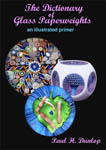images on this website are copyrighted by Papier Presse 2014
In 1680 a glassworks was built on the grounds of a defunct monastery, of an order by the name of the White Friars, in London, England. In 1834 James Powell (1774-1840) purchased this glassworks and did business under the name of James Powell & Sons. They are recorded as having won a prize for their colored glass and fine crystal at the Crystal Palace Exhibition in London in 1851. H.J. Powell was the director of the company until his death in 1922, during which time it operated as James Powell & Sons (Whitefriars) Ltd. After his death the factory moved to Wealdstone, Middlesex. In 1962 it became known as Whitefriars Glass Ltd. after the death of the last of five generations of Powells. It held this name until the factory closed in September, 1980, at that time the oldest glasshouse in the world. Caithness Glass purchased the rights to use the Whitefriars name and has produced some traditional weights, marketed under that name.
The period of regularly producing weights at Whitefriars started in 1951. A weight was commissioned by Triplex featuring their name and the date 1951 engraved on a central cane, surrounded by four rows of simple canes. In the 1970s paperweights became a good part of the product line at this glassworks.
Whitefriars was in business making glass for three hundred years. In their last decade they made a number of exceptional weights, particularly their Christmas weights with mosaic pictures featuring hundreds of tiny canes. Contemporary Whitefriars weights were signed with the silhouette of a robed standing figure (a White Friar) in a cane which usually includes a date.
Excerpted from The Dictionary of Glass Paperweights, Paul H. Dunlop, Papier Presse 2009.


